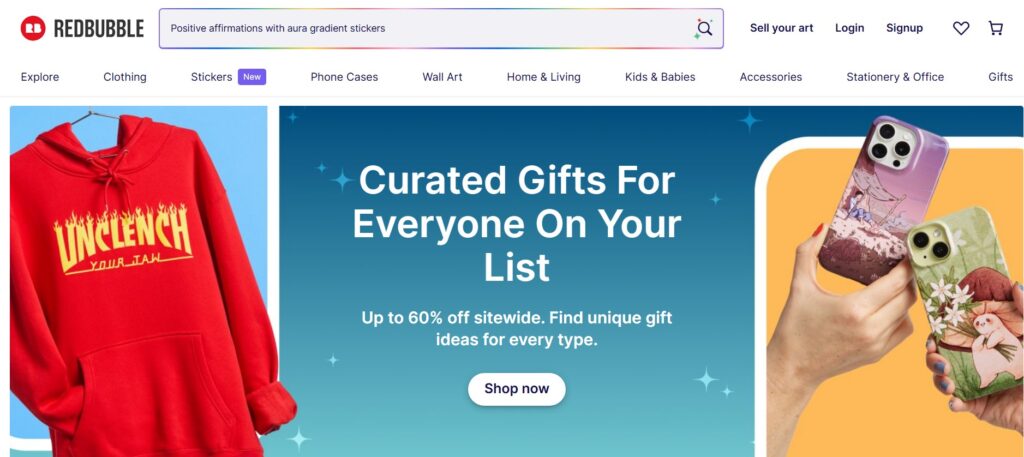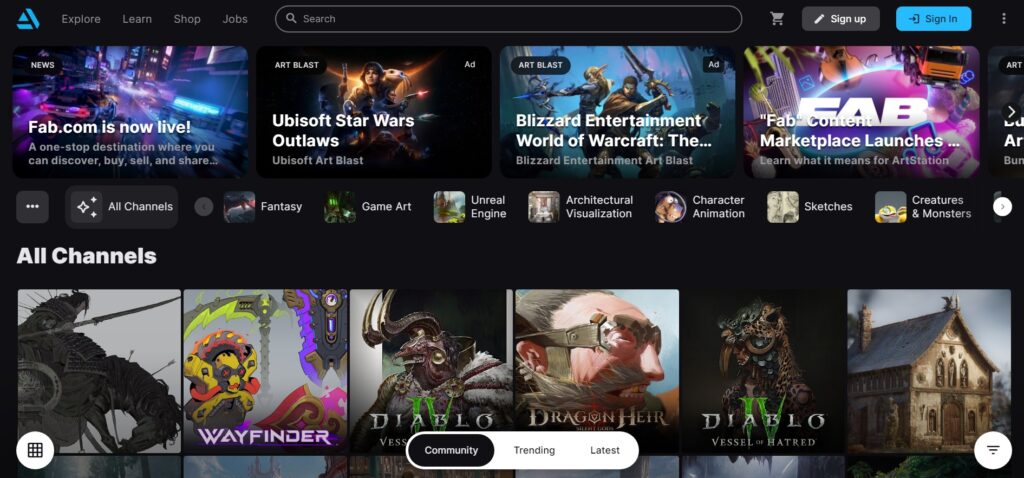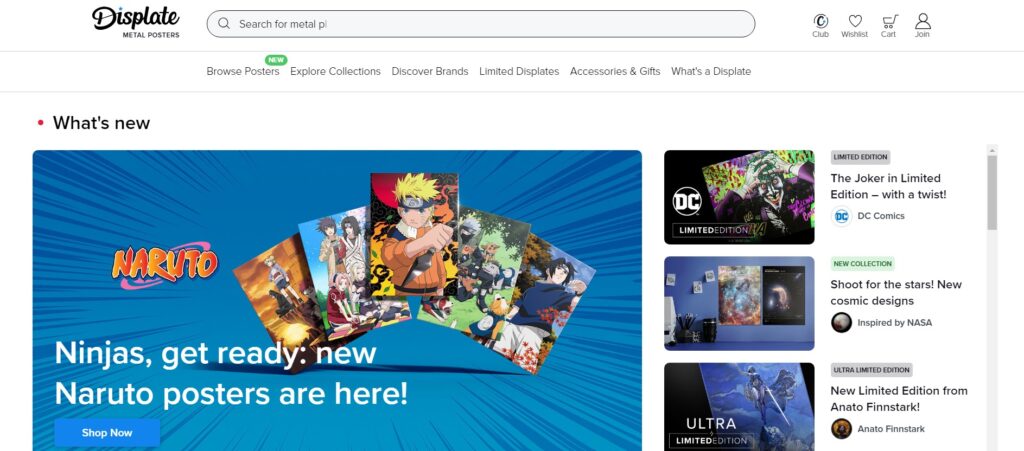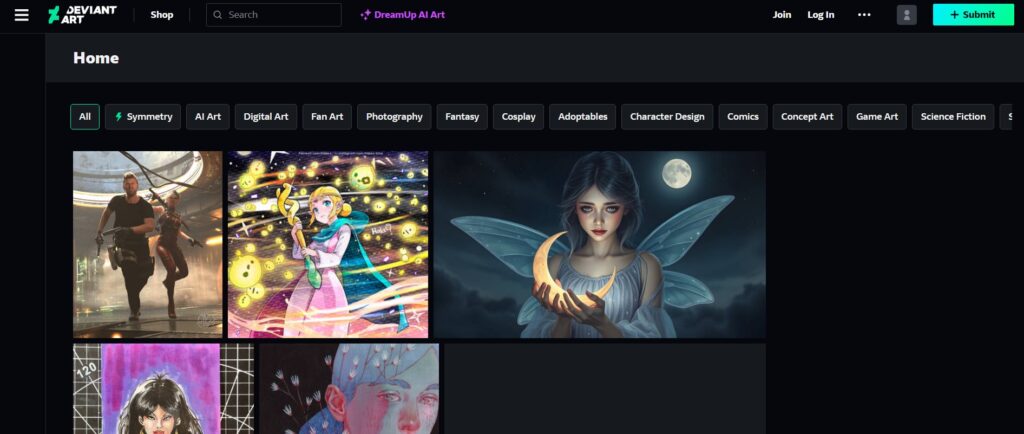Sell AI art
9 popular platforms to sell ai-generated art for passive income in 2025.
As a digital artist navigating the exciting world of AI-generated art, I’m constantly exploring ways to turn creativity into income.
The possibilities in 2025 are better than ever, with a range of platforms that make it easy to share, showcase, and sell AI art to a global audience.
Whether you’re aiming to earn passive income or just want to share your art with others, today’s digital marketplaces offer unique features and communities tailored to artists like us.
In this post, I’ll walk you through some of the most popular platforms for selling AI-generated art, covering each platform’s features, benefits, and potential drawbacks. So if you’re ready to turn your digital art into a source of revenue, let’s dive in and find the perfect platform for you.
1. Etsy
Etsy is an excellent platform for independent creators to sell AI-generated art. Whether you’re selling digital files or physical prints, Etsy provides an easy-to-use environment for setting up an online store.
Features:
- Digital Downloads: Etsy allows sellers to upload digital files (such as JPEG, PNG, PDF) for immediate download by customers, making it ideal for AI-generated art that buyers can print themselves.
- Customisable Shop Pages: Sellers can design their shop’s page, set up profiles, and promote their art using Etsy’s internal marketing tools.
- Payment Integration: Etsy supports integrated payment gateways, including Etsy Payments and PayPal, making it easy for buyers to pay via credit card, debit card, or other methods.
- SEO Tools: Etsy provides search engine optimisation (SEO) features, allowing sellers to tag their listings and optimise for search visibility both within Etsy and on external search engines like Google.
- Etsy Ads: Paid advertisements can be run within the platform to boost visibility and sales.
Use Cases:
- Digital Art Sales: Selling AI art as downloadable files like posters, prints, or phone wallpapers.
- Customised Art Commissions: Offering personalised AI-generated art for customers, such as custom portraits or designs based on their preferences.
- Prints on Demand: Using third-party services like Printful to print and ship physical versions of your AI-generated art on items such as t-shirts, mugs, and home decor.
Pros:
- Global Audience: Etsy’s large customer base gives artists access to international buyers, helping to increase sales potential.
- No Upfront Costs for Digital Sales: You don’t need to worry about inventory or production, which is perfect for digital products like AI art.
- Easy Setup: Etsy’s store setup process is straightforward, even for first-time sellers.
- Low Fees: Listing fees are $0.20 per item, with a 5% transaction fee on sales.
Cons:
- Competition: With millions of sellers on Etsy, standing out among other digital artists can be difficult without strategic marketing.
- High Transaction Fees: Etsy’s transaction and processing fees can add up, particularly if you’re pricing your art at a lower price point.
- Marketing is Key: To get noticed, you’ll need to put in consistent effort with marketing and promotions.
Website Link:
Etsy
2. Redbubble

This platform is ideal for artists who want to sell their AI-generated art on physical products without worrying about manufacturing or inventory.
Features:
- Print-on-Demand Service: Redbubble handles the entire process, from printing to packaging and shipping, so you can focus on creating art.
- Wide Range of Products: You can upload your art and have it printed on over 60 types of products, including clothing, stationery, phone cases, pillows, and more.
- Customisation: Buyers can customise certain products (e.g., size, colour) to fit their needs.
- Global Marketplace: Redbubble reaches a wide audience, allowing your art to be sold worldwide.
- Earnings Dashboard: Redbubble provides a dashboard that tracks sales and royalties, allowing you to monitor your performance.
Use Cases:
- Selling Physical Products: Perfect for selling AI-generated art on tangible products like t-shirts, phone cases, and posters.
- Prints and Home Decor: You can offer prints of your AI art as high-quality wall art, framed prints, and canvas prints.
- Expanding Your Brand: Artists looking to develop their personal brand can use Redbubble as a stepping stone to grow their audience and offer more items.
Pros:
- No Upfront Costs: You don’t need to invest in inventory or worry about shipping, as Redbubble handles all that for you.
- Diverse Product Range: With many products available, you can sell your AI art on items suited for different customer preferences.
- Easy to Use: Uploading designs and listing products is simple, even for beginners.
- Global Exposure: Redbubble’s global shipping and large audience increase the chances of selling your work to international customers.
Cons:
- Profit Margins: Redbubble takes a base price for each product, which can lead to lower profit margins. Artists must balance product pricing with profit expectations.
- Limited Control: You don’t have control over aspects like pricing or the product’s production process.
- Highly Competitive: With thousands of sellers, standing out can be challenging unless you have a distinctive niche or high-quality designs.
Link:
Redbubble
3. ArtStation

ArtStation is especially popular among digital artists and illustrators, making it a prime marketplace for selling AI-generated artwork. ArtStation offers both a portfolio service and an online marketplace where artists can sell digital downloads and physical prints.
Features:
- Portfolio Creation: ArtStation allows you to create a professional portfolio to display your AI art. You can include project descriptions, media files, and links to your social profiles.
- Print-on-Demand: ArtStation partners with print service providers to allow artists to sell their work as prints, framed art, and on other merchandise.
- Digital Download Sales: Artists can offer digital versions of their AI art as downloadable files.
- Royalties: ArtStation provides a royalty-based system for every print or product sold via the platform.
- Pro Account Options: For a fee, ArtStation offers additional features such as enhanced analytics, greater portfolio visibility, and the ability to offer larger file sizes for sale.
Use Cases:
- Professional Portfolio: Showcase high-quality AI-generated art to attract potential buyers or clients.
- Selling Art Prints: Offer your AI art as limited edition prints or posters, with ArtStation managing the fulfilment.
- Connecting with Industry Professionals: ArtStation is used by professionals in the digital art, game, and film industries, making it a great networking platform for collaboration or freelance opportunities.
Pros:
- Industry Recognition: ArtStation is a highly respected platform within the professional art community, which can help build your credibility.
- Prints and Digital Sales: You can sell both physical prints and digital files, allowing for diverse revenue streams.
- Exposure to Buyers and Professionals: ArtStation’s audience includes potential buyers as well as industry professionals who may commission custom work.
Cons:
- Transaction Fees: ArtStation takes a 15% commission on sales of prints, which can reduce your overall profit margin.
- Higher Competition: Being a professional art platform, the level of competition is high, and you may need to invest in promotion to get noticed.
- Premium Account Required for Advanced Features: While free accounts are available, pro accounts with added features (such as advanced analytics) come at an additional cost.
Website Link:
ArtStation
4. Saatchi Art
Saatchi Art offers a space for artists to sell original and limited-edition prints, making it a suitable platform for selling high-end, AI-generated artwork to collectors who value authenticity and uniqueness.
Features:
- Global Art Marketplace: Saatchi Art connects artists with collectors from all over the world, offering exposure to a global audience.
- Print-on-Demand and Originals: You can sell both original AI art and limited edition prints. Saatchi handles the printing and framing.
- Curated Art Selection: Saatchi Art has a team of curators who ensure the artwork featured on the site is of high quality, which can boost your art’s credibility.
- No Upfront Costs: Artists are not charged any fees for listing their works on Saatchi Art. Instead, the platform takes a commission from each sale.
Use Cases:
- Selling Limited Edition Prints: Offer your AI-generated art as exclusive, limited-run prints, which may attract art collectors.
- Selling Originals: If you create one-of-a-kind AI artwork, you can sell these directly to collectors.
- Targeting Art Collectors: Saatchi Art’s platform is targeted at serious art collectors, offering an opportunity for artists to reach an audience willing to pay premium prices for original art.
Pros:
- High-Quality Audience: Saatchi Art attracts art collectors who are willing to purchase high-end, original works.
- Global Reach: The platform has a vast international audience, helping you to expand your reach as an artist.
- Easy-to-Use: Setting up your profile and listing artwork is a straightforward process.
Cons:
- Higher Commission: Saatchi Art takes a commission of 35% on all sales, which is relatively high compared to other platforms.
- Limited Control Over Pricing: The platform may recommend pricing based on market trends, which could affect your pricing strategy.
- Highly Curated: Because Saatchi Art is a premium marketplace, not all artwork is accepted, so you may need to apply before listing your art.
Link:
Saatchi Art
5. Creative Market
Creative Market is a go-to for designers and creators who want access to customisable assets like AI-generated vector art, illustrations, and templates.
Features:
- Digital Asset Sales: Artists can sell PSD, AI, and SVG files, which is ideal for vector art or editable AI-generated resources.
- Licensing Options: Offers various licensing options (personal, commercial, and extended) for buyers.
- Product Bundles: Artists can create and sell bundles, adding value for customers and increasing sales.
- Large Community: A vibrant community of buyers and sellers in the creative field.
Use Cases:
- Selling AI-generated vector art and other design resources.
- Offering different licensing options for personal and commercial use.
- Creating themed art packs or bundles.
Pros:
- Passive income from digital downloads.
- Access to a large community of designers and creatives.
- Allows for flexible licensing options.
Cons:
- 30% commission on sales.
- High competition among sellers.
Link:
Creative Market
6. Displate

Displate is a print-on-demand platform focused on metal prints, which provides a premium feel to AI-generated artwork. It’s a great choice for artists looking to sell limited-edition or collectible items.
Features:
- Metal Print-on-Demand: High-quality metal prints, adding a unique aesthetic.
- Artist Store Customisation: Customisable storefront for artists.
- Royalties on Sales: Artists earn royalties with each sale.
- Global Reach: International audience with a strong reputation for high-quality art.
Use Cases:
- Selling AI art as collectible metal prints.
- Creating themed or limited-edition artwork collections.
- Reaching art collectors interested in premium products.
Pros:
- Unique, high-quality prints.
- International audience and exposure.
- Artists keep royalties without upfront costs.
Cons:
- Higher pricing for buyers due to premium materials.
- Limited to metal prints only.
Link:
Displate
7. Fine Art America
Fine Art America is a comprehensive print-on-demand platform that allows artists to sell their artwork on prints, wall art, and various products. It’s widely used by professional artists seeking high-quality reproductions.
Features:
- Wide Product Range: Offers prints, framed art, apparel, and home decor.
- Artist Profile: Customisable profiles for building a portfolio and brand.
- Print-On-Demand Services: Handles fulfilment, printing, and shipping.
- Global Marketplace: Access to a large, global art-buying audience.
Use Cases:
- Selling AI art as framed prints, wall art, and on home decor items.
- Customising products with AI-generated art for home and lifestyle decor.
- Reaching a diverse group of art collectors and interior designers.
Pros:
- Wide range of products for expanding potential sales.
- Large audience focused on high-quality art.
- Print-on-demand fulfilment handles production and delivery.
Cons:
- Moderate fees and commissions per sale.
- High competition among professional artists.
Link:
Fine Art America
8. DeviantArt

DeviantArt is ideal for AI artists looking to build a fanbase and directly engage with buyers.
Features:
- Community-Focused Platform: Interact with other artists and potential buyers.
- Print-on-Demand Service: Offers various products like prints and posters.
- Subscriptions and Tips: Options to earn through fan subscriptions and direct support.
- Customised Artist Profile: Artists can build a personalised profile to showcase their work.
Use Cases:
- Selling AI-generated art as posters, prints, and wall art.
- Building a dedicated following and engaging with fans.
- Offering exclusive content or early access to subscribers.
Pros:
- Strong, loyal community of art enthusiasts.
- Ability to engage directly with followers and buyers.
- Multiple revenue streams, including tips and subscriptions.
Cons:
- Lower profit margins due to platform fees.
- High competition; it may be challenging to gain visibility.
Link:
DeviantArt
9. Big Cartel
Big Cartel is an e-commerce platform designed for artists and creators. It offers full control over branding, pricing, and product presentation, making it ideal for AI artists who want a standalone storefront.
Features:
- Customisable Storefront: Options to design a unique online store.
- No Transaction Fees: Artists keep full profits on the free plan.
- Inventory Tracking: Tools to manage stock for physical items.
- Easy Integration: Link your store with social media for easy promotion.
Use Cases:
- Selling digital or physical products, such as AI-generated art prints.
- Building a brand with customisable store themes and layouts.
- Direct sales to fans or followers, with control over pricing.
Pros:
- Full control over branding and store customisation.
- No commission or transaction fees on the free plan.
- Easy integration with social media platforms for promotion.
Cons:
- Limited features on the free plan; paid plan needed for more advanced options.
- Requires more marketing effort as it doesn’t have a built-in audience.
Link:
Big Cartel
Conclusion:
Selling AI-generated art has become more than just a hobby—it’s a viable way for artists like us to earn passive income and gain recognition.
With platforms like Displate, Creative Market, and Society6, we can reach audiences worldwide, putting our art on everything from home decor to limited-edition collectibles.
As I’ve discovered, each platform has its strengths, and choosing the right one depends on what works best for your art and audience.
By taking the time to explore these platforms, you’ll find the best fit to share your creations, generate income, and connect with art lovers everywhere. Here’s to turning our creativity into a thriving, rewarding journey!


















